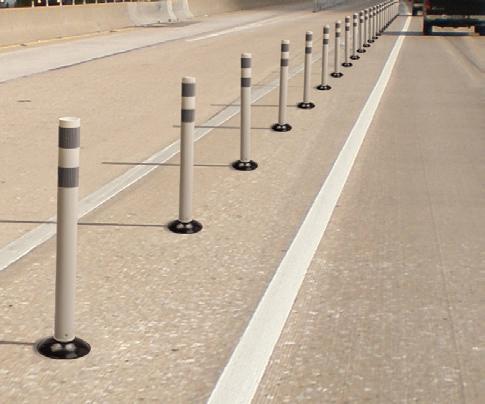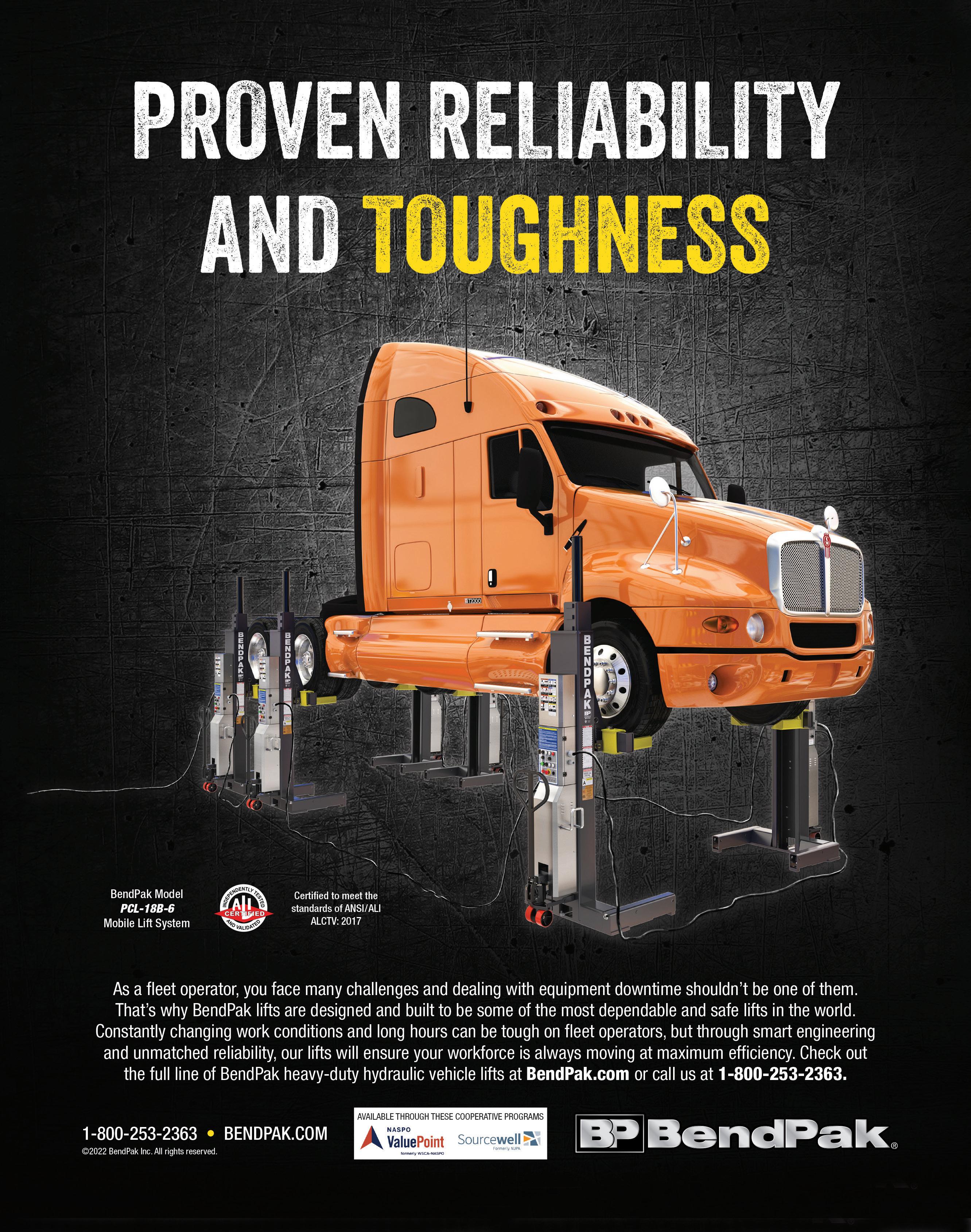
8 minute read
Crisis Management
Tidal valves reduce impact of king tides
By BETH ANNE BRINK-COX | The Municipal
At first glance, the phrase “king tides” might make you think of Mardi Gras. It almost sounds festive, doesn’t it? But it’s not. The king tide is the highest predicted high tide of the year, higher than the highest water levels on any average day. These tides cause localized flooding, and they damage shoreline developments, housing and infrastructure. That damage is gravely compounded, should these tides occur at the same time as hurricanes or cyclones.
What about their other name, perigean spring tides? Perigee is the point in the orbit of the moon or a satellite at which it is nearest the earth, and as we all know, that’s the kind of thing that affects all sorts of weather and accompanying issues: hurricane season is June 1-Nov. 30 this year. Add to that the knowledge that South Florida is very flat, and you can see why flooding is a major issue, especially with climate change and sea level rise factored in.
Basically, because of global warming, when it rains, it pours more. The National Oceanic and Atmospheric Administration examined the 2016 record-breaking rainfall in Louisiana and determined that these rains were at least 40% more likely and 10% more intense, due to climate change. “High tide flooding, sometimes referred to as nuisance flooding, sunny-day flooding, or king tide flooding, is occurring more frequently every year as sea levels continue to rise, and is increasingly disrupting coastal community life,” according to the NOAA website.
West Palm Beach, Fla., is working in every way possible to deal with these tides and their subsequent flooding, with an $800,000 project to install tidal valves. Construction began in 2020 and was originally expected to be completed in 2023.
Armando Fana, assistant city manager for the city of West Palm Beach, agreed. “The sunny-day tidal flooding has been an issue for the last five to seven years, and it is progressing annually. We realized over five years ago that we had to do more, due to the rising sea level predictions as well as what we were experiencing in real time. The causes of flooding issues in the city include a high water table, low-lying residential streets, sea level rise, aging infrastructure, absence of stormwater infrastructure and a lack of green space (i.e., excessive impervious area). As the sea level rise issues continued to increase, the impact of these factors all became progressively more evident. These were not significantly noticeable prior to five to seven years ago.”
As you would expect, there were earlier solutions that worked well for a time. Fana explained, “Sandbagging a perimeter around the catch basins and inlets in the street held back or contained tidal waters, and for a time, this worked. When we did that, we were able to prevent or control tidewaters from breaching onto the roadways. Over time, and currently as the sea level rise continues to worsen, no matter how much we stack the sandbags, the water overflowed onto the roadway, causing flooding. When it comes to today or sunny-day flooding, the city will post flood warning signs in areas known to be susceptible to tidal flooding.”
Enter tidal valves. Fana said, “Tidal valves will help reduce flooding of both high tide and king tide events. In previous years, tidal
Tidal valves reduce impact of king tides
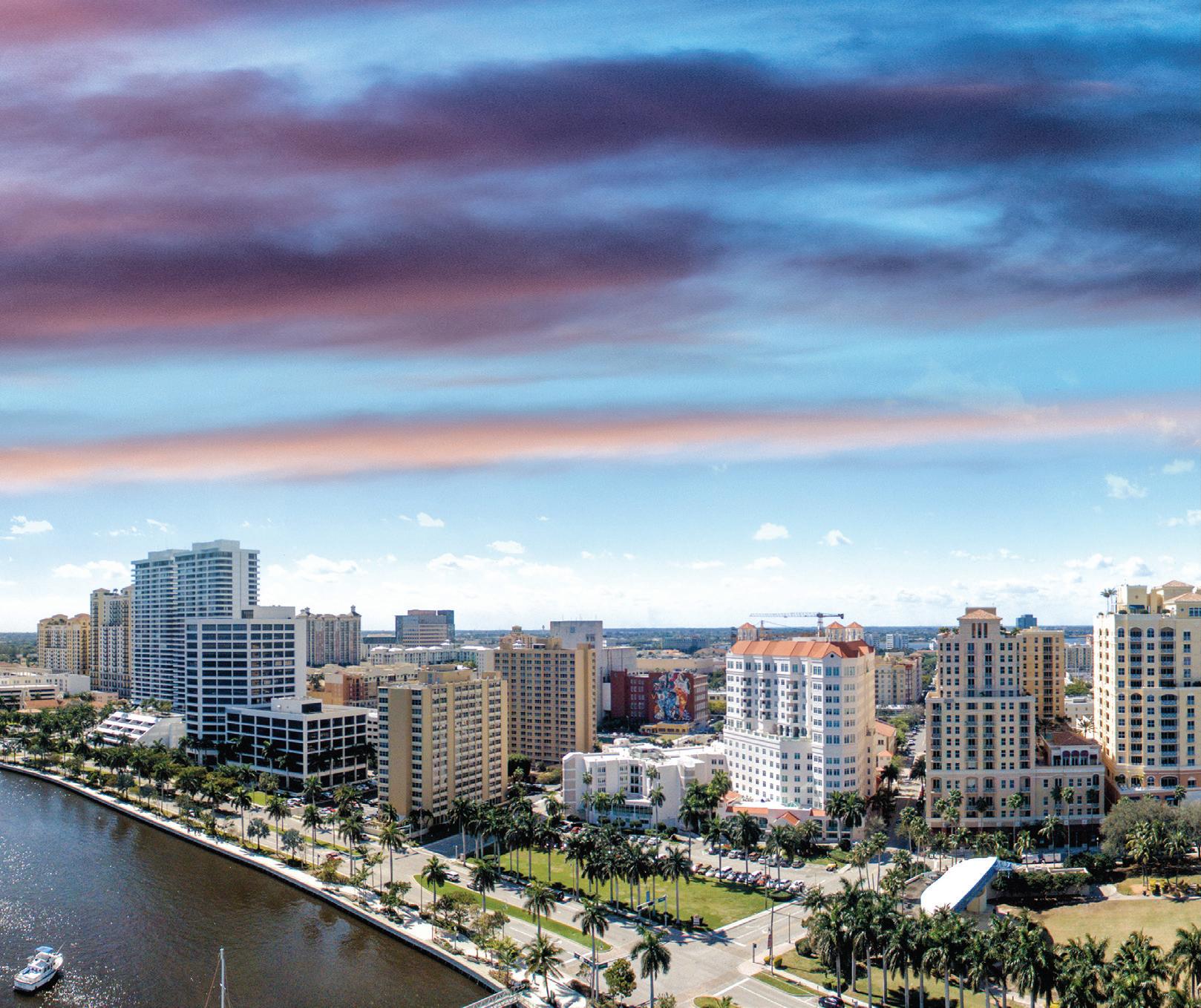
West Palm Beach is a popular destination in south Florida and is separated from neighboring Palm Beach by Lake Worth Lagoon. (Shutterstock.com) A field is flooded in West Palm Beach, Fla. The city is installing tidal valves to reduce flooding. (Shutterstock.com)

flooding would only occur a few times each year, such as during the king tides of April and May, and again in October and November. With sea level rise, the number of days of high tides flooding the roads is increasing, and more areas are flooding because of that higher tide level. The goal of adding tidal valves is to help reduce tidal flooding in an effort to adapt to sea level rise. Tidal valves help prevent saltwater from the Lake Worth Lagoon flooding the streets. There will still be instances of street flooding when a rainstorm occurs during high tide, though. The flood waters will dissipate as the tide level drops and the tide valves open.”
Of course, installing such a process is time consuming, and the work is very intricate. Fana elaborated, “The installation of tidal valves may include installation of new stormwater structures, new stormwater pipes, cleaning and/or lining of the existing stormwater outfall system; excavation; and opening of roadways and green space areas to install the new infrastructure. The types of tidal valves — because there are several — include inline check valves, duckbill check valves, and flap gate valves. The type of valve chosen is dependent on the situation.”
He added, “Tidal valves may include, but are not limited to, professional engineering design. Underground utility installation contractors typically do the work for the city. The construction crew sizes consist of approximately six or more workers, plus equipment at each location.”
The city has been “implementing this program by installing the tidal valves at four to seven locations at a time,” said Fana. The city “first installed two tidal valves in 2017 and 2018 to assess the differences in the types of valves being installed, then evaluating the installation, maintenance and effectiveness of the valves available from at least two different manufacturers. After that, additional valves were installed in 2020, and the city is targeting to have all tidal valves completed by the end of 2024.” The proposed plan will see 35 valves installed by the time the project is completed.
With a starting cost of $800,000, the project required commitment to investment. Fana noted, “The city’s annual stormwater budget provided the initial funding in the fiscal year 2020, as well as some grant funding we received from the Florida Department of Environmental Protection in October 2021. The total cost is approximately $3.4 million.”
When you compare that price tag to the costs of flood damage, repair work and replacement, plus environmental cleanup — some companies charge by the square foot — it’s easy to see why this sum, large as it is, was necessary and well spent. Flooding brings contamination and disease, as the waters can carry raw sewage, leaked toxic chemicals and runoff from hazardous waste sites or factory farms. This can cause polluted drinking water supplies and cause multiple infections — eye, ear, skin and gastrointestinal. When the waters recede, bacteria and mold may remain, and this increases respiratory illnesses, such as asthma.
As every other business has experienced in the last two years, there were the alltoo-familiar setbacks. The pandemic and subsequent quarantine affected this project as it has so many others.
Fana explained, “Challenges include material procurement lead time, which escalates construction and labor costs. There are further challenges during construction: access to install the tide valves; cleaning the pipes of sediment and barnacles; and discovering existing stormwater pipes that have failed and needed to be replaced. There are
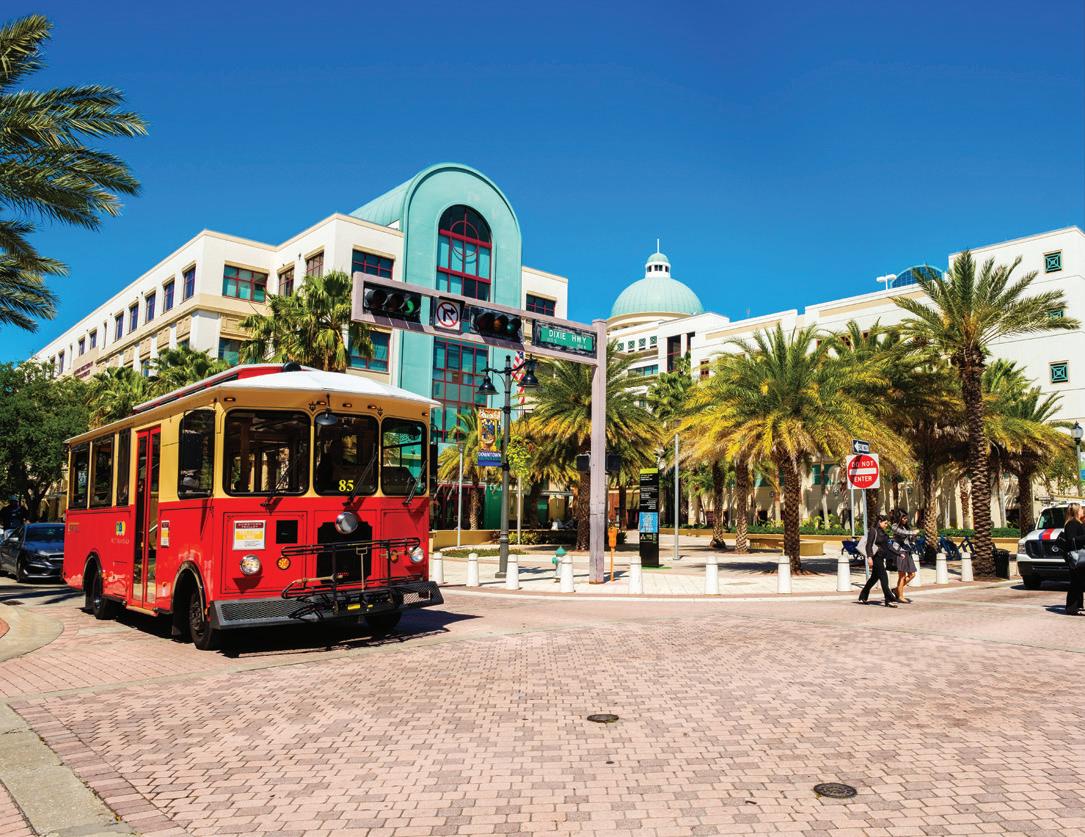
West Palm Beach, Fla., has invested in installing 35 tidal valves to reduce flooding as sea levels rise. Pictured is the popular West Palm Beach downtown district with City Hall along Clematis Street. (Shutterstock.com)
unknown conditions only installed during construction. And we have to make sure the valves are properly installed.” And that’s just the beginning.
Fana said, “There are ongoing challenges that include required annual maintenance upkeep. As we progress through the implementation of our program, we anticipate many of these challenges, based on the historical lessons learned just in the past year of our early implementation experiences.”
The public reaction, to no one’s surprise, has been supportive.
Fana said, “There has not been any observable opposition to this effort.”
And that’s all for the better; recent studies suggest that by 2050, there will be 10 to 12 more inches of water, which will lead to massive flooding. Fana said long-term planning is in the works. “Higher levels of flooding would necessitate the installation of stormwater pump stations, rebuilding existing roads to higher levels and raising the city seawalls.” None of those would be fast, easy or inexpensive, but they are certainly being considered if or when the need arises.
St. Augustine has also dealt with major flooding repeatedly, and it, too, has tried tidal valves, or check valves. These valves allow stormwater to drain out under low tide conditions, but during high tide, they prevent ocean water from backing up into the stormwater network. According to the city, tidal flooding was essentially eliminated in the areas where those valves had been installed. Charleston, S.C.; Virginia Beach, Va.; and Amityville, N.Y., are but a few of the other states that have looked to tidal valves/check valves as a solution to better deal with floodwater and its ensuing damage. After all, more than 8.6 million Americans live in areas susceptible to coastal flooding, and northeasters or hurricanes are capable of pushing walls of water straight up onto the land.
Climate change is increasing the frequency of the strongest storms, and this is expected to continue through this century, and tidal valves make a good solution … for now.
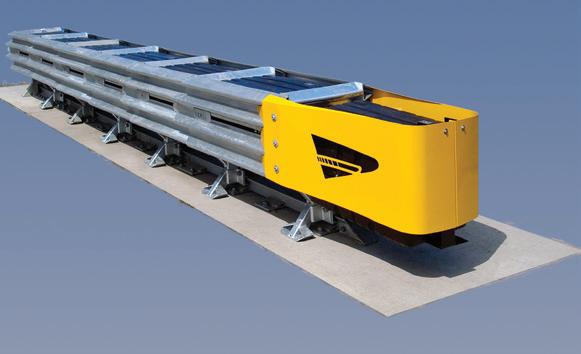
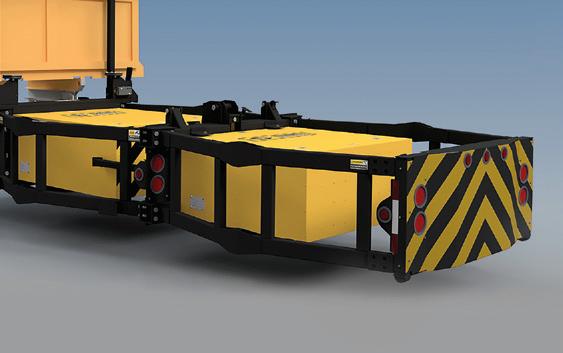
End Terminals

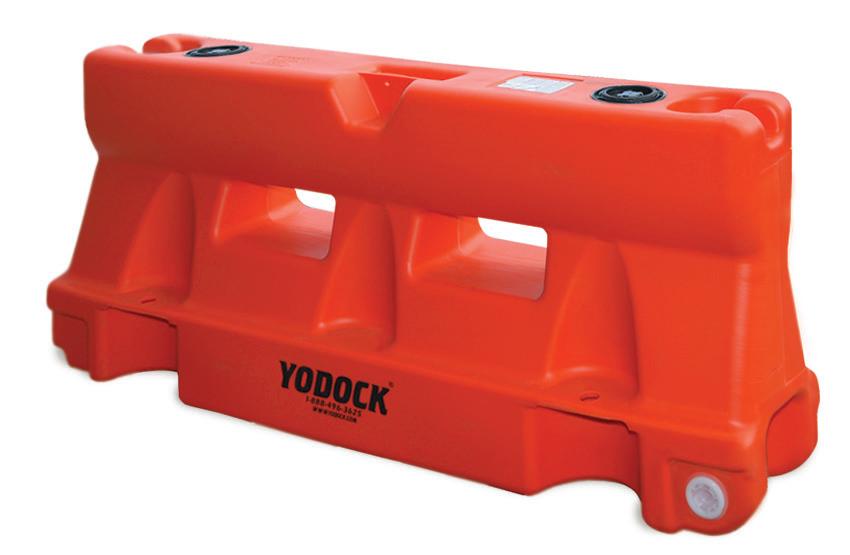
We offer a full line of tangent, fl ared and median guardrail end terminals tested to and eligible for reimbursement under established federal crash test standards. The SoftStop® System tangent terminal is tested to MASH 2016 criteria.
